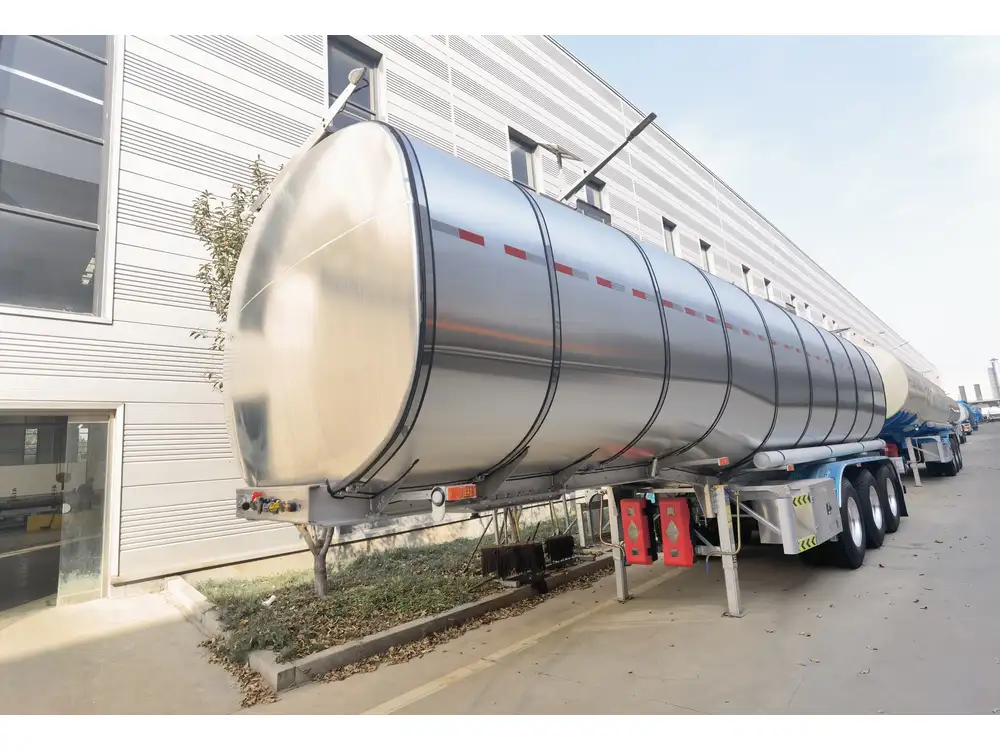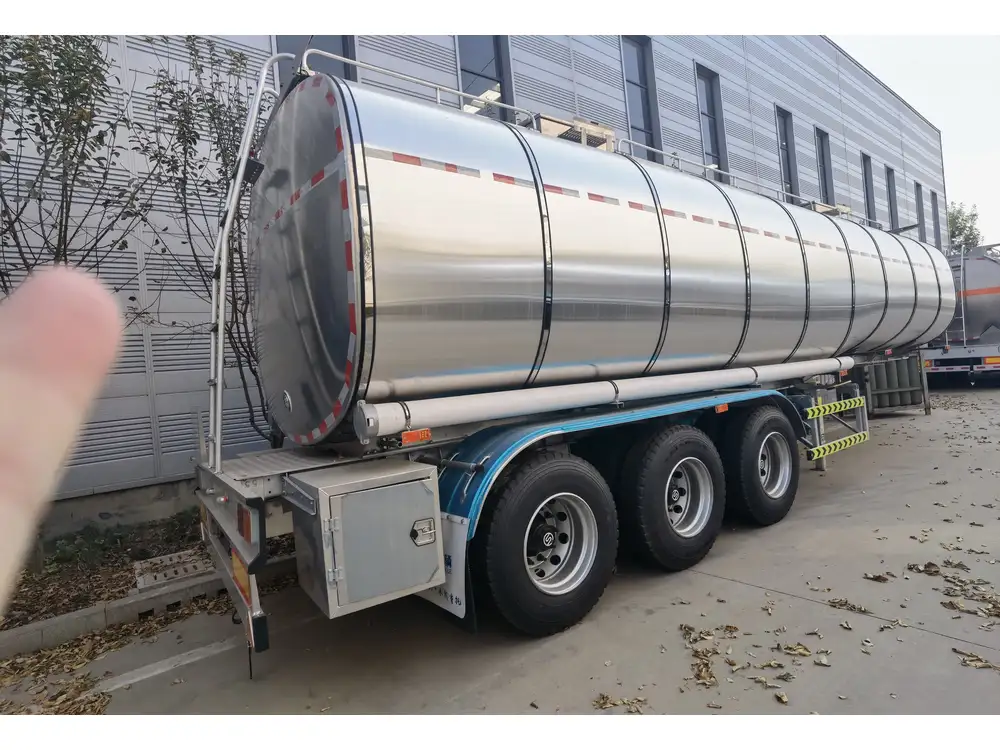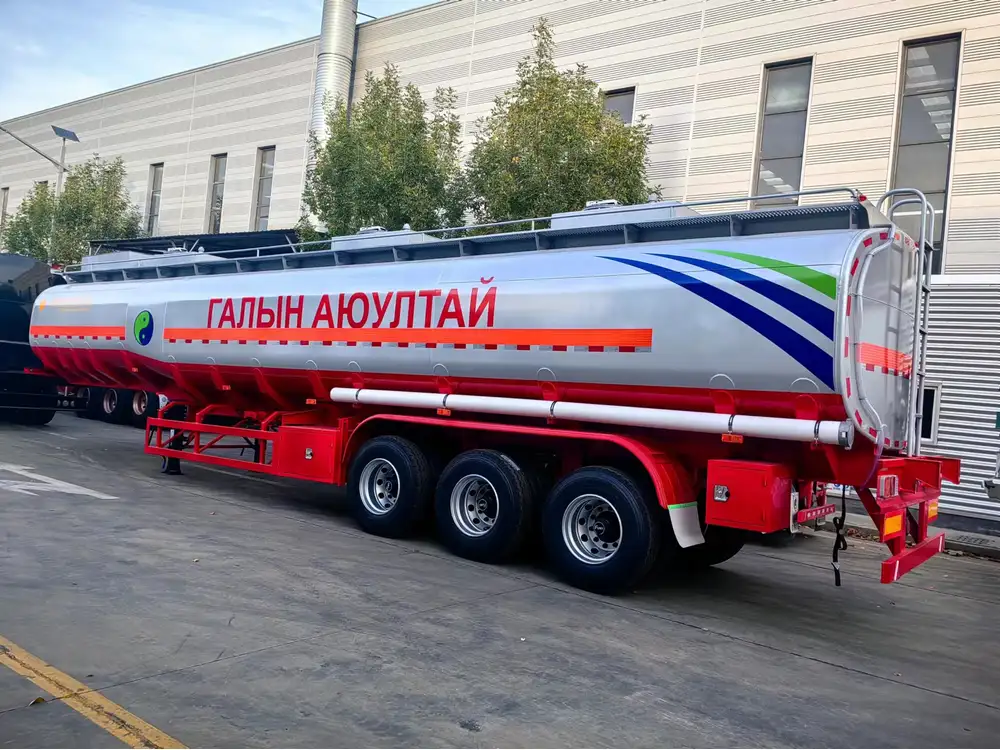In the vast expanses of Namibia, where the rhythmic clatter of heavy machinery and the roar of diesel engines define the landscape, reliable fuel storage solutions become paramount. For those in the transport and logistics sectors, selecting the ideal diesel tank for the back of a truck is not just about purchasing equipment; it’s about ensuring efficiency, durability, and safety.
Understanding Your Needs: The Essentials of Diesel Tanks
When considering a diesel tank for the back of a truck, several pivotal factors come into play. These include:
| Factor | Importance |
|---|---|
| Capacity | The size of the tank must align with the operational demands, ensuring ample fuel for extended journeys. |
| Material | Look for high-grade materials that withstand harsh weather conditions and corrosion. |
| Compliance | Ensure the tank meets Namibia’s regulations regarding safety and environmental standards. |
| Portability | A design that facilitates easy mounting and dismounting from the truck bed enhances usability. |
| Integration | The tank should seamlessly integrate with the existing fuel delivery system of your fleet. |
Capacity Matters: Choosing the Right Size
Determining the right capacity for your diesel tank is crucial. Common sizes range from 200 liters to 1,500 liters or more. However, opting for a tank that balances weight and fuel capacity is vital; a substantial tank weighs more and can affect truck performance. Here’s a quick comparison of typical capacities:
| Tank Size (Liters) | Operational Time (Approximate) | Suitable For |
|---|---|---|
| 200 | 4-5 hours | Short-haul transport |
| 500 | 10-12 hours | Medium-haul transportation |
| 1000 | 20-24 hours | Long-haul logistics and expeditionary work |

Material Selection: Durability and Safety
The durability of the diesel tank directly relates to the material it is made from. Steel, for instance, is robust and resistant to impacts but can be heavy. On the other hand, aluminum is lighter, promoting better fuel efficiency, but it might not be as durable under extreme conditions. Consider tanks made from polyethylene, which are resistant to corrosion and lighter:
- Steel Tanks: Robust, heavyweight, suitable for rigorous use, but may rust over time if not treated.
- Aluminum Tanks: Lightweight, corrosion-resistant, ideal for mobile units, though more susceptible to denting.
- Polyethylene Tanks: Lightweight, resistant to corrosion, ensuring longevity, with a lower chance of leaking.
It’s essential to choose a material that aligns with your usage conditions in Namibia’s diverse environment.
Compliance and Safety: Navigating Regulations
Before making a purchase, verify that your chosen diesel tank complies with local regulations. In Namibia, the Environmental Commissioner regulates the installation and use of fuel storage systems to minimize environmental impact. Non-compliance can lead to hefty fines or operational halts. Key compliance aspects include:
- Leak Prevention Systems: Tanks should be equipped with double-wall features or leak detection systems.
- Ventilation: Proper vapor vents are necessary to reduce pressure build-up and mitigate explosion risks.
- Installation Guidelines: Adhere to guidelines regarding the distance from buildings, water sources, and the public.
Portability and Usability: Enhancing Efficiency
A diesel tank that is easy to transport and install will save you time and effort. Features that enhance usability include:
- Quick-Release Mechanisms: Allow for swift detachment and mounting.
- Built-in Handles or Mounts: Facilitate secure and convenient installation.
- Weight Distribution Design: Enhances balance on trucks, reducing strain on suspension.

Integration with Fuel Delivery Systems
For fleets that require consistent fuel access, integrating the diesel tank with existing fuel systems simplifies operations. Ensure that the tank features:
- Compatible Connections: For seamless integration with your truck’s fuel line.
- Fuel Monitoring Technology: Helps track diesel consumption and alerts for refueling.
- Safety Valves: Prevents overfilling and spillage during deliveries.
Top Diesel Tank Options for Back of Truck in Namibia
Here are some noteworthy options for diesel tanks that are currently available:
| Model | Capacity | Material | Key Features | Price Range |
|---|---|---|---|---|
| MODELA | 500 L | Steel | Heavy-duty, high pressure resistant | $1,200 – $1,500 |
| ALUMAX | 300 L | Aluminum | Lightweight, corrosion-resistant | $1,000 – $1,200 |
| POLYTECH | 1000 L | Polyethylene | Double wall for leak protection | $1,700 – $2,000 |
| FLEXDRUM | 200 L | Steel/Aluminium | Compact design, quick-release mechanisms | $800 – $1,000 |
Each model has distinct advantages, allowing you to select the most fitting solution based on your operational requirements.
Installation Recommendations
Proper installation of your newly purchased diesel tank is essential for safety and functionality. Here’s a concise checklist for installation:
- Selecting Location: Choose a flat, stable surface on the truck bed.
- Using Mounting Brackets: Ensure that the tank is securely fastened using robust brackets.
- Connecting Fuel Lines: Use high-quality hoses that can withstand pressure and prevent leaks.
- Routine Inspections: Regular checks for wear and tear, leaks, and connections will prolong the tank’s lifespan.

Conclusion: Invest in Quality Diesel Tanks
In conclusion, investing in a reliable and efficient diesel tank for the back of a truck is crucial for logistics operations in Namibia. By considering capacity, material selection, compliance, and portability, companies can enhance their operational efficiency while ensuring adherence to safety standards. With numerous options available from trusted manufacturers like CarMax Vehicle, you can confidently select a diesel tank that fulfills your needs and contributes to seamless transportation.
FAQs
1. What is the average lifespan of a diesel tank?
The average lifespan varies depending on the tank material and maintenance; steel tanks can last 10-15 years, while polyethylene tanks may last indefinitely if well-maintained.
2. Can I install the diesel tank myself?
Yes, if you follow the installation guidelines and ensure to adhere to safety standards. However, consulting with a professional is recommended.
3. What maintenance does a diesel tank require?
Regularly inspect for leaks, check connections, clean the exterior, and monitor fuel quality to prevent contamination.
4. Are there restrictions on where I can install a diesel tank?
Yes, local regulations dictate installation parameters including distances from water sources and structures; adherence is crucial for compliance.













Reviews
There are no reviews yet.